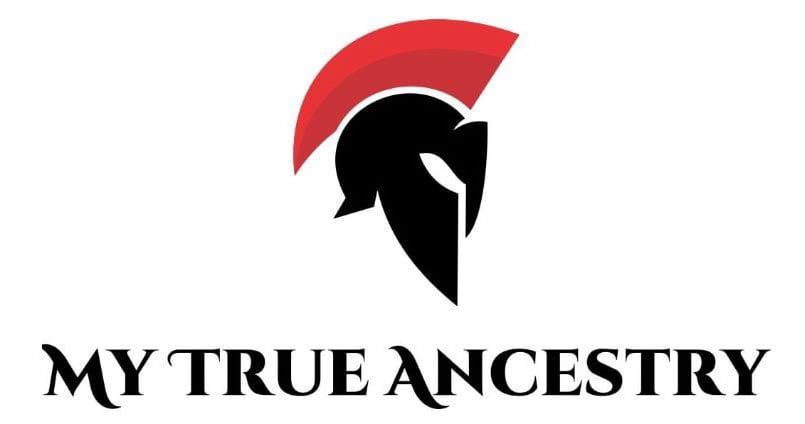Scandinavias Battle Axe Culture: A Tapestry of Migration, Admixture, and Ancestry Across the Corded Ware Horizon





The Genomic Ancestry of the Scandinavian Battle Axe Culture
The research surrounding the Scandinavian Battle Axe Culture represents a fascinating chapter in Middle Neolithic archaeology, woven with threads of cultural exchange, migration, and genetic discovery. By delving into the enigmatic world of ancient DNA, archaeologists and geneticists are piecing together the story of the people behind this remarkable culture, a group showing deep connectivity to the broader Corded Ware Culture that spread across vast regions of Europe during this transformative period.
For centuries, history has been told through artifacts and chronicles. Now, DNA gives us a different kind of evidence — one that speaks from within. Learn how your genetic story connects to the ancient world at MyTrueAncestry.com.
A dedicated team of researchers sequenced the DNA of eleven individuals from present-day Sweden, Estonia, and Poland, dating from 3330 to 1665 BCE. These individuals came from various archaeological contexts, including megalithic tombs and distinct grave sites associated with both the Battle Axe and Corded Ware archaeological traditions. The burial site at Bergsgraven in Linköping, Sweden, offered a particularly poignant glimpse into the lives of these ancient people, where two individuals from the Battle Axe Culture lay buried alongside their distinctive grave goods, including the iconic boat-shaped battle axes that symbolize their cultural identity.
The excavations revealed a rich tapestry of artifacts and burial practices that speak to the complex nature of these ancient societies. Stone axes, pottery, and sophisticated craftsmanship stood as tangible evidence of a vibrant cultural tradition interwoven with genetic heritage. From the megalithic structures of Rössberga and Öllsjö, further stories emerged, drawing a comprehensive timeline that spans nearly two millennia and encompasses distinct cultural complexes across Northern Europe.
The genomic findings reveal that the Battle Axe Culture people were genetically distinct from other Neolithic populations in Scandinavia. Most remarkably, their ancestry includes significant contributions from the Pontic-Caspian steppe herders, who themselves brought novel genetic influences during their expansion into Europe around 3000 BCE. Through comprehensive ancient DNA analysis, researchers determined that the Battle Axe people were migrant newcomers to Scandinavia, rather than mere cultural adaptations from existing local groups.
The genetic analysis painted a vivid picture of these ancient individuals, showing they carried varied mitochondrial DNA lineages that enriched our understanding of their connections to Stone Age hunter-gatherers and Neolithic farmers. Male lineages primarily belonged to the R1a haplogroup, indicating a deep connection to Eastern European hunter-gatherers, separate yet contemporaneous with the celebrated Yamnaya migrations. This intricate genetic tapestry tells a tale of migration, cultural exchange, and demographic transformation that fundamentally shaped the prehistoric landscape of Northern Europe.
One of the most intriguing discoveries points to the systematic reuse of megalithic tombs by the Battle Axe Culture, originally constructed by the earlier Funnel Beaker Culture. This practice hints at a fascinating cultural interchange, perhaps representing a symbolic connection to the land and its ancestral histories that those earlier stone structures embodied. The reuse of these ancient burial sites speaks volumes about the complex relationships between successive cultures and the continuity of sacred spaces across generations.
These megalithic structures, like those at the Öllsjö site in Scania, Sweden, stand as silent witnesses to the progressive layering of cultural exchanges over millennia. The practice represents more than simple convenience; it suggests a deliberate engagement with the monumental legacy of previous inhabitants, indicating both respect for ancestral traditions and the establishment of new cultural identities within existing sacred landscapes.
The deeper genetic analysis demonstrated that those buried in Battle Axe contexts carried substantial steppe ancestry, serving as a telltale sign of the iconic Yamnaya expansion into Europe. This genetic signature represents a tangible legacy of one of prehistory's most significant demographic transformations. The research underscores a complex journey involving both men and women in the movement of peoples from the steppes into the heart of Northern Europe, challenging earlier assumptions about the nature and scope of these prehistoric migrations.
The individuals sampled from these sites displayed fascinating physical diversity, with DNA evidence suggesting they possessed a mixture of light and dark hair colors and varying eye colors ranging from brown to blue. These genetic markers paint a colorful and humanizing picture of the Battle Axe Culture people's appearance, allowing us unprecedented glimpses into their day-to-day existence and the visual diversity that characterized these ancient populations.
The Battle Axe Culture represents more than simply a migration story; it embodies a remarkable tale of cultural exchange and technological innovation. The intricate designs found on pottery and other artifacts, believed to have crossed the Baltic Sea through trade networks, stand as evidence of sophisticated technological transfers between ancient societies. These artistic and technological exchanges occurred alongside the movement of peoples, creating complex patterns of cultural diffusion that extended far beyond simple population replacement.
The archaeological evidence suggests that the spread of Corded Ware traditions into Scandinavia involved both continuous cultural exchanges over extended periods and more concentrated waves of migration. The genetic signatures preserved in ancient bones, much like the pottery and tools found in archaeological contexts, tell stories not merely of movement, but of adaptation, connection, and the gradual transformation of entire regional cultures through sustained contact and interaction.
https://royalsocietypublishing.org/doi/10.1098/rspb.2019.1528
Discover how your DNA connects to ancient civilizations at www.mytrueancestry.com.
Comments